Table of Contents
- Parenting manga “Son! This is a man’s meal!”
- The holiday season has arrived! Fall outings with Dad’s special lunch boxes!
Parenting manga “Son! This is a man’s meal!”
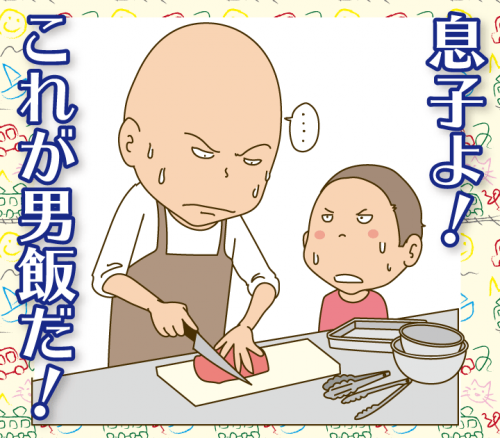
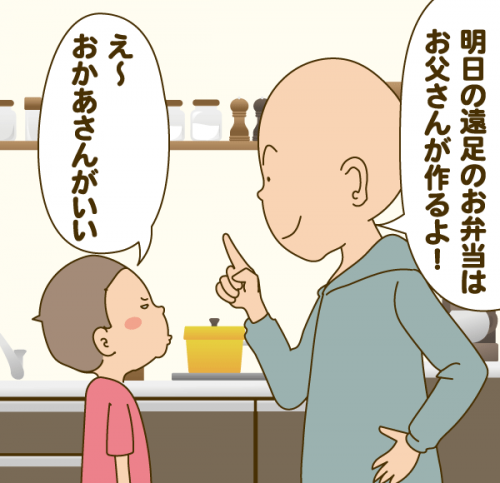

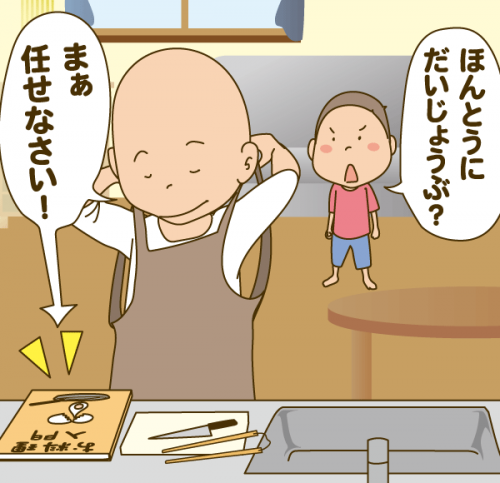



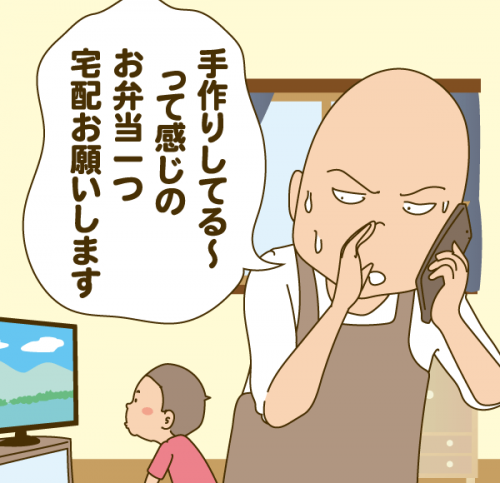


Profile
Eiichi
After working for a design company in Tokyo, he became a freelance illustrator. He is a hard-working father who creates animation, manga, and illustrations, including winning the Yubari International Fantastic Film Festival’s International Short Film Showcase Division Excellence in Animation Award.
The holiday season has arrived! Fall outings with Dad’s special lunch boxes!
Spread out a sheet on the lawn under the soft autumn sunlight,
It is a special lunch for the whole family.
This time, even dads who say they are not good cooks,
Easy to prepare, delicious, and beautifully presented
Tips for making bento We will tell you how to make a lunch box.
Why not take this opportunity to try your hand at making a lunch box?
To cook good rice
Deal well with water!
The essential ingredient for a good bento is good rice. We asked Mr. Michio Koike of Koike Seibeiten in Shibuya Ward to teach us how to cook tasty rice. Mr. Koike is also a five-star rice master certified by the Japan Rice Merchants Association.
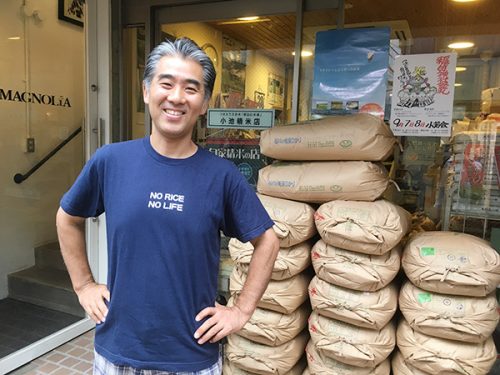
Tips for Cooking Delicious Rice Part 1
Store rice in the refrigerator.
You probably store vegetables in the refrigerator, but most people probably store rice in a rice bin or other container and keep it under the sink. However, rice is also a perishable food. If possible, we would like you to store it in the vegetable compartment of your refrigerator, just as you do with vegetables. This will delay oxidation, which leads to deterioration of flavor.
Tips for Cooking Delicious Rice Part 2
Be particular about the water used for washing rice
Before cooking rice, the rice is sharpened, but rice that has just been removed from the refrigerator is dry and absorbs all the water at once. This is why the water you first put on the rice is so important. Tap water is fine, but you can also use mineral water. In this case, it is best to choose soft water. It will cook the rice fluffier than hard water. Also, the first water should be discarded after about 10 seconds at most, as the water will have the odor of impurities and bran on the rice.
Tips for Cooking Delicious Rice Part 3
Wash rice as gently as possible.
The purpose of polishing rice is to remove excess bran that remains around the rice. In the past, because there was still a lot of bran left when the rice was polished, it was considered better to use the belly of the palm of the hand to grind the rice with force until the rice bran became clear. However, with today’s advanced rice-polishing technology, there is almost no bran left in the rice, so the rice cooks up deliciously even if you don’t grind it that hard.
A whisk is useful when sharpening rice. With a whisk, you can gently sharpen the rice without using too much force. It is so easy that even small children can help. Also, some people may spill rice when replacing cloudy water with new water. In such cases, we would like you to use a colander. Put the rice in the colander and the water in a bowl. When you replace the water, you lift the colander from the bowl. We recommend that the colander used for this purpose be made of plastic, which will not damage the rice, rather than metal.
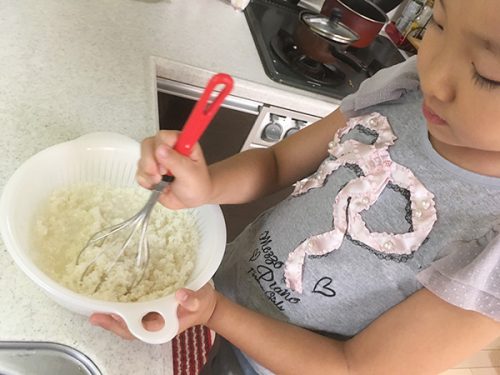
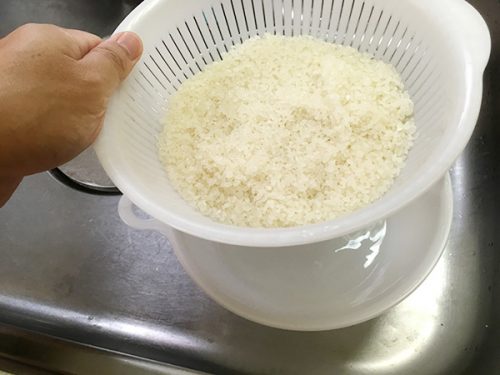
Tips for Cooking Delicious Rice Part 4
Use cold water when cooking rice!
Once the rice has been sharpened and transferred to the kettle, cook it in a rice cooker with 200 cc of water to 1 cup (180 cc) of rice. The enzyme amylase in rice saccharifies starch to make it sweeter, but in order to activate the enzyme, the temperature must be raised over time. Cold water is better for cooking rice, as it takes longer to raise the temperature.
Tips for Cooking Delicious Rice Part 5
Break up the cooked rice immediately after cooking.
Cooked rice is very soft. If left as it is, it will be crushed. Therefore, as soon as the rice is cooked, break it up and allow each grain to come into contact with the air. The rice will be fluffy and crispy at the same time. When breaking up the rice, do not stir the rice unnecessarily, but rather cut the rice with a rice scoop.
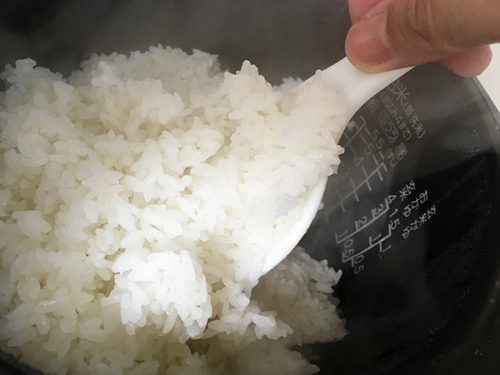
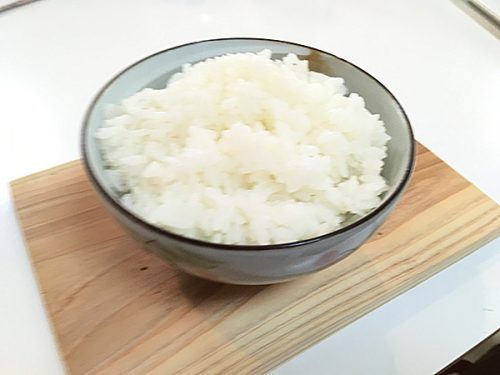
How to make delicious onigiri
Do not grip tightly!
If you want to eat deliciously cooked rice outside, it is, after all, onigiri. They are easy to make and easy to eat outside. We asked Yusuke Nakamura, president of the Onigiri Association, which is working to spread the appeal of onigiri around the world, to tell us how to make delicious onigiri and what he recommends.
Gently squeezing the rice ball makes it tastier.
A good onigiri will fall apart when you put it in your mouth, and the delicious taste of the rice will spread in your mouth. Furthermore, the taste of the rice mixes well with the taste of the ingredients. Therefore, when making onigiri, one must be careful not to grip the rice too tightly.
If you grip the rice too tightly, the rice will be crushed, and you will not be able to properly taste the deliciousness of the rice. Moreover, if it is a bento lunch box, there is a long time between cooking and eating. There is also a risk that the rice will become crumbly like rice cakes.
It is sufficient to make onigiri just enough to shape it, i.e., two to three times. If the rice is made while it is still hot, it will stick to each other, preventing the rice from losing its shape.
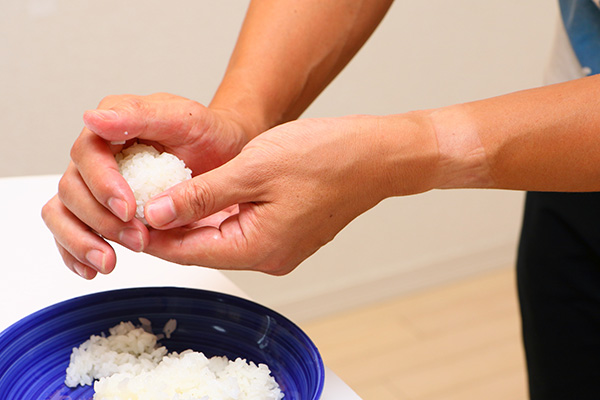
If the rice is too hot to grip, you can use aluminum foil. It is also hygienic. You can also wrap it up and take it with you when you are finished.
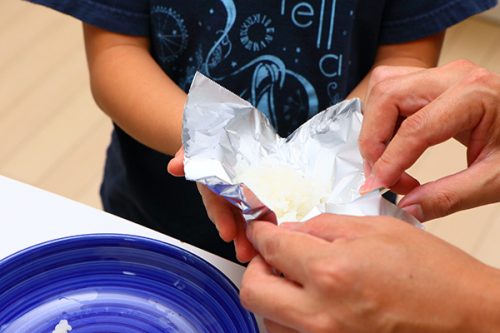
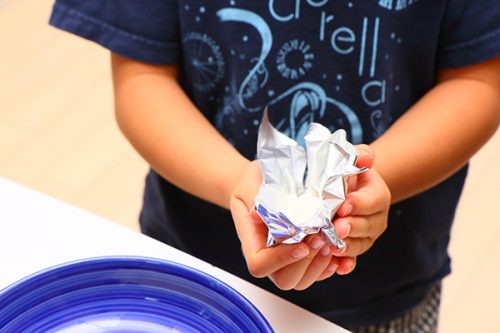
Focusing on form can make it less tasty.
People often try to make a nice triangle, but they are so concerned with the shape that they end up with too much of a grip. There is no need to be particular about the shape. Think of onigiri as the more pretentious it is, the less tasty it will be. A round or bale shape is fine.
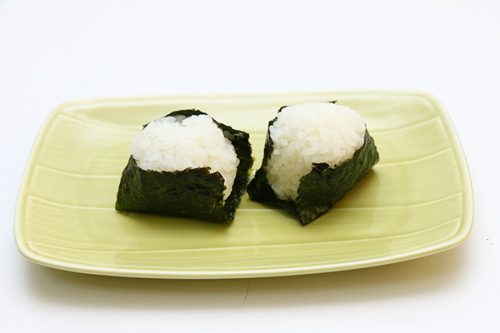
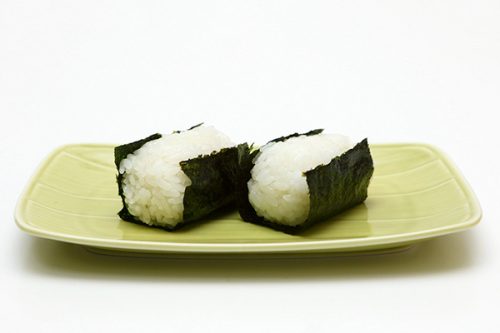
Also, some people may find it difficult to grip the ingredients because they tend to fall apart when they are placed inside. In such cases, simply placing the ingredients on top of the onigiri is sufficient.
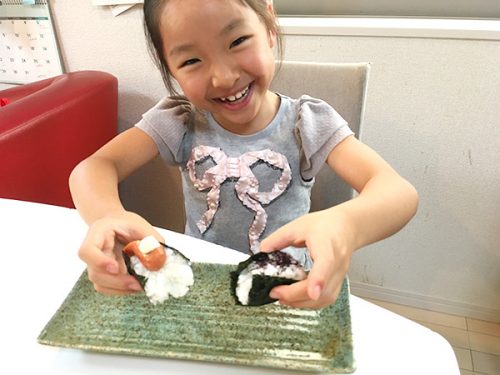
Idea rice balls that kids will enjoy
While standard ingredients such as salmon and pickled plums are good, it is also fun for parents and children to share ideas and try new ingredients. One of the charms of onigiri is that they go well with a variety of ingredients. For example, how about this menu?
[Fried rice balls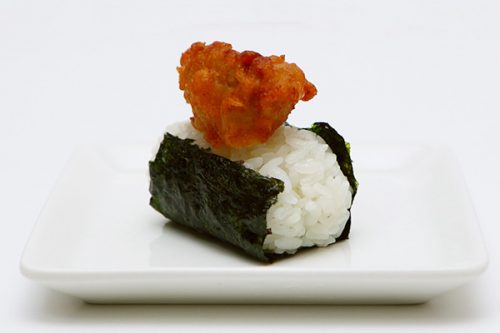
Simply place the karaage on top of the onigiri, which is made in the style of tenmusu. It is very easy and hearty.
Potato chip rice balls.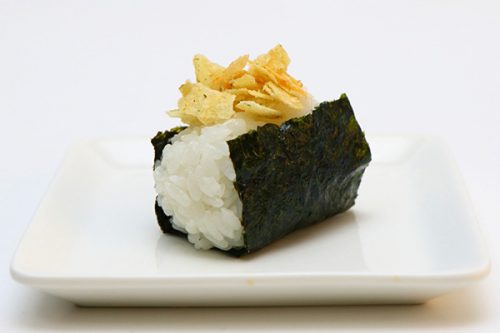
Potato chips are crushed into small pieces and sprinkled like furikake (sprinkled on rice). The salty taste goes well with rice, and the steam from the rice makes the potato chips a little wilted, which is delicious. If you pour it on just before eating, you can also enjoy the crispy texture.
Sausage and cheese onigiri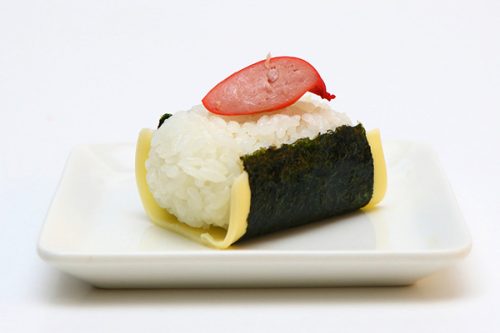
A parade of kids’ favorites. Wrap sliced cheese and nori over the rice ball. Nori and cheese go well together. Finally, place a sausage on top.
[Okonomiyaki style rice balls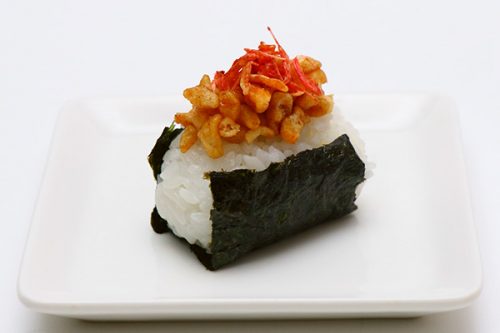
Fried balls are tossed with chuno sauce and finally sprinkled with dried shrimp. The punchy, okonomiyaki-like flavor is a big hit with children.
To make your lunch box more colorful
Let’s fill it like painting a picture.
The appearance of food is also important. If the dishes are beautifully arranged when the bento box is opened, it is sure to raise the father’s stock. We asked graphic designer Makoto Murakami, who teaches a bento-making course for fathers, for his advice.
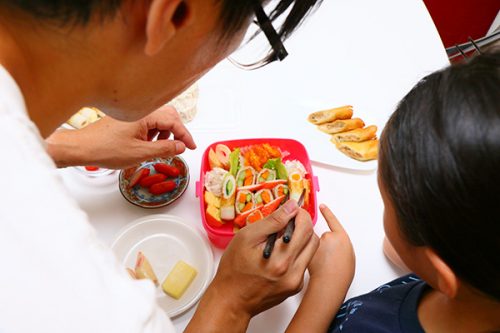
Yellow, red, and blue (green) ingredients for color
Japanese cuisine is a good reference for creating colorful bento boxes. Japanese cuisine uses a variety of seasonal ingredients to add rich colors to dishes. The five basic colors are white, black (purple), yellow, red, and blue (green). If you are conscious of this balance, you can improve not only the coloring but also the nutritional balance. In particular, yellow, red, and blue (green) make the dish look beautiful and increase the appetite. Try packing your child’s lunch in a bento box as if you were drawing a picture, while discussing it with them.
Yellow, red, and blue (green) foods include
| vegetable | Soybeans, pumpkin, corn, sweet potato, bell pepper |
|---|---|
| Meat, fish, etc. | Eggs, cheese |
| seasoning | Curry powder, mustard |
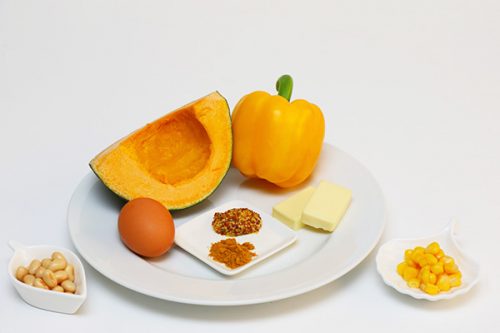
| vegetable | Tomatoes, carrots, bell peppers |
|---|---|
| Meat, fish, etc. | Dried plum, sausage, ham, bacon, salmon, shrimp, crab cake, cod roe |
| seasoning | catsup |
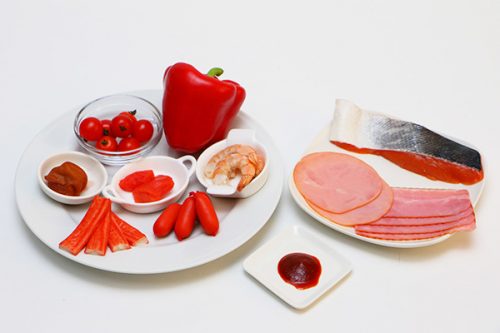
| vegetable | Lettuce, cucumber, broccoli, spinach, edamame, green pepper, green peas, cabbage, asparagus, green beans |
|---|---|
| seasoning | basil sauce |
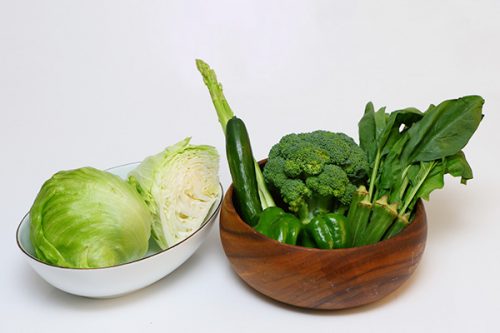
Many of these ingredients can be simply boiled or cut, so if you prepare and arrange many of them, you can create a colorful lunch box.
Cut diagonally, place from the middle
Simply by devising the way you cut your food, you can improve the appearance of your bento. In particular, cutting at an angle can create a three-dimensional effect. Also, dishes with multiple colors, such as meat rolls and chikuwa stuffed with vegetables, look more vibrant when the cross section of the dish is visible.
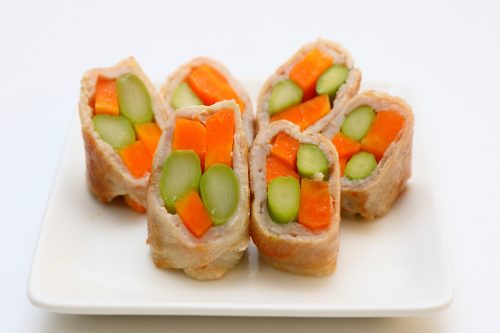
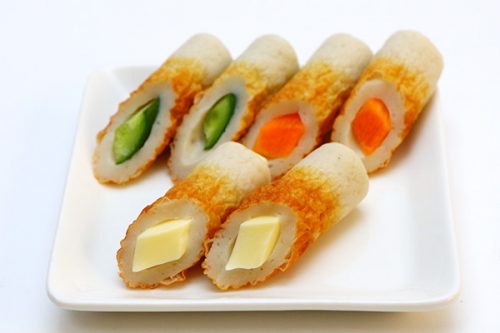
When arranging food in the limited space of a bento box, we tend to pack it from the edges. However, if you do so, you will end up with an unbalanced whole. First, decide what you want to put in the middle as the main dish. Place it in the middle and then place it around the perimeter.
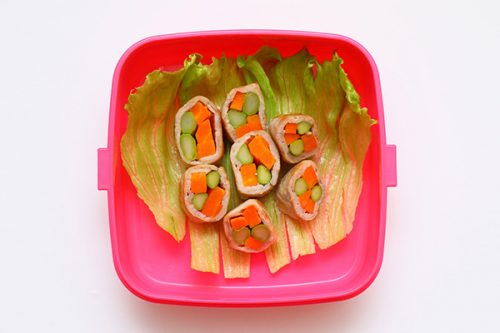

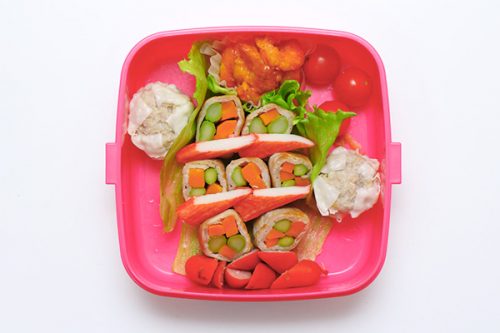
As is the case when arranging dishes on a plate in everyday cooking, people who are not used to arranging dishes tend to put each item in one place. There is no need to put each item together. Especially for brightly colored items such as reds and greens, scattering them around will greatly enhance the colorfulness of the dish.
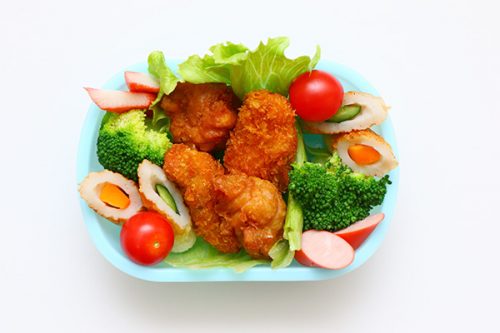
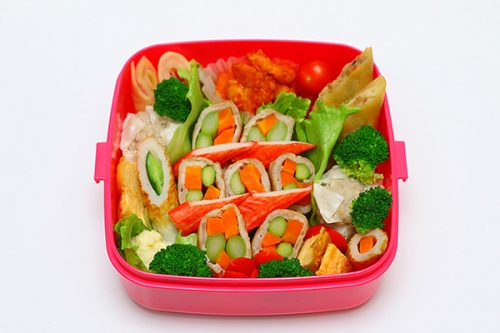

Mom and the kids will be overjoyed when Dad makes lunch. You don’t have to aim for perfection. The secret to deliciousness is to make it with love.












